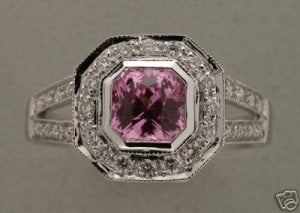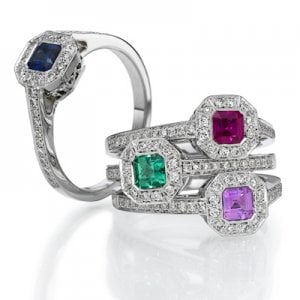Ninama
Brilliant_Rock
- Joined
- Jul 30, 2007
- Messages
- 1,289
I was surfing for pink sapphires and found this ring on eBay. It's decribed as Asscher cut, but doesn't look step cut to me. My question is, if it's from a 1910 piece... might it have been heat-treated? Are older stones sometimes treated and reset?
Original estate 1910 Asscher cut bright pink sapphire from an estate complete with raised crown and small table the stone is set in a custom made 18k white gold ring designed and made just for this stone in the Peter Suchy workshop. 32 diamonds approx. total weight .38cts, G, VS. 1 pink Asscher cut sapphire approx. total weight 1.08cts. Stamped 18k. 5.0 grams.

Original estate 1910 Asscher cut bright pink sapphire from an estate complete with raised crown and small table the stone is set in a custom made 18k white gold ring designed and made just for this stone in the Peter Suchy workshop. 32 diamonds approx. total weight .38cts, G, VS. 1 pink Asscher cut sapphire approx. total weight 1.08cts. Stamped 18k. 5.0 grams.







300x240.png)